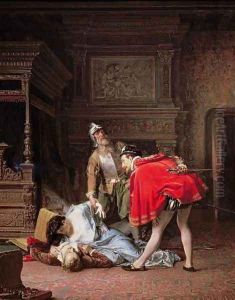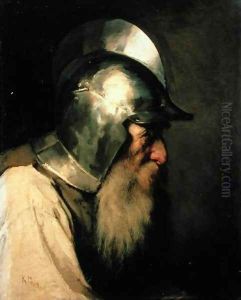Karlis Fridikh Huns Paintings
Karlis Fridikh Huns, also known as Karl Huns, was a Latvian artist born on July 17, 1901, in Riga, which at the time was part of the Russian Empire and is now the capital of Latvia. His work is not widely known internationally, and he is often considered a minor figure in the Latvian art scene. However, his contributions to Latvian art during his brief lifetime were significant, particularly in the fields of graphic art and book illustration.
Huns' early life coincided with turbulent times, as Latvia underwent dramatic political changes, shifting from Russian rule to a brief period of independence following World War I, before being occupied by Soviet and then Nazi forces during World War II. Despite the unrest, Huns managed to pursue his passion for art. He studied at the Art Academy of Latvia in Riga, where he honed his skills and developed his unique style.
Although his career was cut short by his untimely death on February 18, 1942, during the difficult years of World War II, Huns' legacy is preserved through his graphic works and illustrations. His style was characterized by a delicate precision and a sensitivity to detail, which made his illustrations particularly well-suited to literary works and poetry.
In addition to his graphic art, Huns also explored painting, although his paintings are less known and have not been as widely exhibited or studied. Because of the limited scope of his career and the challenges of the time period he lived in, much of Huns' life and work remain to be thoroughly researched and appreciated by art historians and critics.
The scarcity of information about Karlis Fridikh Huns and his work reflects the broader challenges faced by many Eastern European artists in gaining recognition on the international stage. Nonetheless, Huns is remembered within Latvia as a talented artist whose career, though brief, contributed to the cultural life of his nation during a period of profound historical changes.

